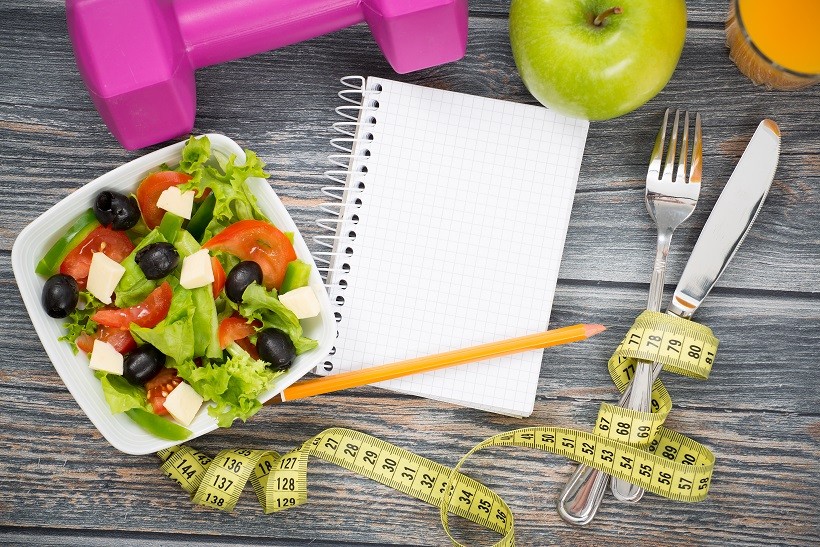
I would like to share with you how I use a food journal in order to find offending foods and eliminating them from my diet. Migraines can alert you to a food intolerance, which in turn can alert you to an underlying digestive issue. What we consume, often times, determine how healthy or sick we become. They old saying“You are what you eat” comes to mind.
Health practitioners maintain that food allergies should appear within a few hours of the meal to be classified as such. While this may be true for food allergies, it is not the case for a food intolerance and the two are different. In my case it usually takes 48 hours for migraine symptoms to appear after consuming an offending food item. The migraine usually appears on the second day after consuming something that brings on a migraine. Migraine sufferers have particularly sensitive digestive systems and our bodies reject harmful agents faster.
What to put in your food journal
How do you determine whether something that you eat on a regular basis might be causing a migraine? This is best done by keeping a food journal. A doctor once told me that finding the offending food is harder than finding a needle in the haystack. While keeping a food journal was difficult and time consuming at first, it was certainly not impossible. You need to start keeping a food journal and it needs to be as detailed as possible. Usually, the food journal writing period can last anywhere from two to six months. In my case, it has become a normal part of my day. The journal should also record migraine particulars, such as listing the approximate time when the episode starts, the symptoms, strength, and the approximate time that the episode ends. Do not wait until the next day or until a migraine episode happens to try and remember what you may have consumed the day prior or the day before that. Instead, devote a few minutes immediately after each meal to at least jot down the following:
- Time of Day
- Type of meal ( Breakfast/Lunch/Dinner/Snack)
- Meal details (What did you eat?)
- List all of the ingredients, including all spices and oils that were used (If someone else prepared the meal, ask them to name the ingredients)
- List your beverage and the amount that you consumed
- Place an asterisk next to any unusual items that normally are not part of your diet
One week before you start writing a food journal, completely eliminate caffeine, gluten, and dairy from your diet. This is important and needs to be done ahead of time because, in my experience, these are often significant triggers and should be isolated first. However, eliminating caffeine from your diet will cause withdrawal symptoms. It is not unusual to have a withdrawal headache that lasts almost a week.
In my case, caffeine magnified migraine symptoms substantially.
During the initial elimination period, I would not recommend consuming caffeine, and this includes:
- Coffee
- Coca Cola or equivalent
- Diet Coca Cola or equivalent
- Mountain Dew
- Carbonated beverages in general
- Energy drinks such as Red Bull
- Chocolate
- Hot Cocoa
- Most forms of tea (Iced-Tea, Brewed, Instant, Green Teas etc.) Herbal teas are fine.
- Guaraná
- Excedrin
- Midol
- Various migraine medications
As previously mentioned, all forms of dairy products should be removed from your diet and this includes:
- Milk
- Cream
- Cheese
- Yogurt
- Butter
- Pudding
- Custard
- Pancakes
- Waffles
- Some margarine
- Mashed potatoes
- Certain boxed cereals that contain casein, nonfat milk powder, or whey
- Certain protein or granola bars that contain casein, nonfat milk powder, or whey
- Prepared breadcrumbs
- Breads that contain casein, nonfat milk powder, or whey
journal example
Once you have removed both caffeine and dairy from your diet and the withdrawal symptoms from caffeine have disappeared, start writing your food journal. A particular food journal entry might look like this:
———————————————————————————————————————-
Date: Sunday, January 9th
Meal: Dinner
Dish: Spaghetti meatballs
Ingredients: Olive oil, garlic, onions, ground beef, parsley, canned tomato sauce, diced tomatoes, bell peppers, spaghetti pasta
Spices: Salt, black pepper, cumin, allspice, oregano, red pepper
Beverage: Bottled water, one bottle
Dessert: Apple pie
Ingredients: Apple, sugar, flour, nutmeg, lemon juice, buttermilk, eggs, cinnamon
———————————————————————————————————————-
what to do once you have isolated an offending food
When your migraine episode develops, you will note the exact date and time and try to correlate the episode with your meals over the last few days. Initially, you will want to exclude the entire meal that you think might be the cause. I would exclude the entire dinner from January 9th, which means all spices as well. Once I am confident that something in that meal was contributing to a migraine, I would reintroduce the pasta together with every other ingredient except perhaps the peppers. You may have to wait up to three days, at which time you then introduce the peppers into a completely separate dish that you know to be safe if you have not developed any symptoms. If your symptoms reappear, you can be fairly certain that peppers are a trigger. You will repeat these steps for every meal and every ingredient that you suspect.
don’t give up
Finding the foods that cause your migraines will take time. While using your food journal, you will eventually get to a point when symptoms return when they should not. This is frustrating but means that there are other foods that you most likely overlooked. Do not give up but instead continue by keeping detailed records in your food journal. When you feel that you have hit a dead end, go back to a safe and neutral base. For example, you might choose boiled carrots or other neutral vegetables. Introduce one new ingredient at a time, and see how these affect you. After a while, you will likely discover food items to avoid.
In many cases, a basic food allergy test will not help you discover certain food intolerances that may be causing your migraines . This is not what they are designed to do.
Keeping a detailed food journal is the quickest, cheapest, and most reliable way to get to your triggers.

I want to thank you for your article. I’m going to start with the elimination of caffeine and dairy products. Wish me luck for my new journey to be migraine free. I suffer from them so bad where I puke and get loose bowels at the same time. Also I need to disrobe to get comfortable from any clothing. Alot of the times I end up in the ER for an IV of medicine. So thanks again for the article.
You are most welcome. I can relate to what you are going through and I hope that the information will get you closer to reducing and possibly eliminating your migraine episodes. It may be prudent to rotate out of the other big categories as well, like sugar and grains (gluten), in addition to dairy and caffeine. After staying away form these food categories for some time, it may make sense to find out whether taking digestive enzymes with meals improves the symptoms. If this is the case, it could mean that the stomach acid is low or that something like SIBO is present. Best of luck and keep us informed.